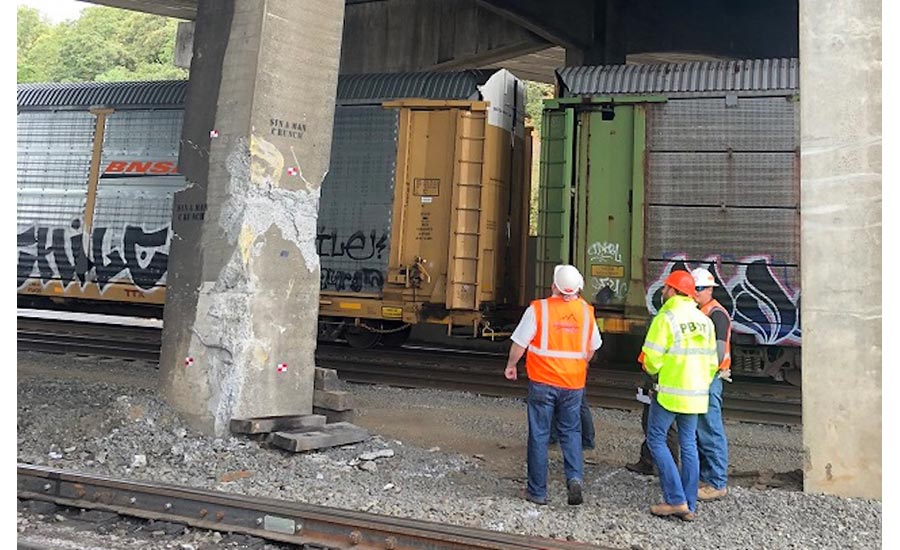When a train derailment damaged columns supporting the North Going Street Bridge in Portland on Sept. 7, the uncertainty around the lone public connection to Swan Island, which houses about 200 industrial businesses and more than 12,000 jobs, including the ample freight operations of Daimler, UPS and FedEx, left the future of the fixes in doubt.
The Portland Bureau of Transportation (PBOT) has slowly reopened lanes, now planning to open the fourth lane on the six-lane bridge ahead of Thanksgiving in late November. The congestion in the crucial freight corridor has been heavy since the bridge reopened with two open lanes on the north side of the bridge about one day following the train derailment that struck the concrete columns. A third lane was opened about a week after the initial Union Pacific Railroad derailment.
The initial repairs by PBOT crews have made the bridge safe enough to handle three lanes of traffic, two for westbound travel to Swan Island and one for eastbound travel, forcing some businesses to change work schedule to ease congestion. The PBOT says the lane closures have delayed deliveries and increased reports of road rage incidents and vehicle collisions while travel times off the island “vary widely and unpredictably in the afternoon and early evening hours.”
The Portland City Council gave emergency approval for a contract up to $1 million with Cascade Bridge of Salmon Creek, Washington, to provide bridge stabilization and repair work including permanent repairs. Opening a fourth lane will allow two lanes on and off the island at all times but required Union Pacific Railroad shutting down the railroad for repairs. Cascade Bridge has agreed to work at night to expediate the opening of the fourth lane and expects to have the final fix in place for all six lanes to open in spring 2020.
The bridge, which draws an average of 35,000 vehicles each day, was struck by a remote-controlled train that derailed — the cause of the derailment is under investigation, but early reports blame the possibility of a broken track — on rail under the bridge in the 200-acre Albina Yard. Cracks to the support columns reached three-quarters of an inch in width.
The train struck two separate portions of the bridge, both the southern portion and center bridge. Those sections, built in 1976 and 1930, were connected during a retrofit in 2010, which strengthened them to handle the train collision, but could make the repairs more difficult. The Oregonianreports that the City Council has “low confidence” that the $1 million contract will cover the final costs.
The PBOT says the city’s risk management team will seek to recover from Union Pacific “all reasonable and necessary costs associated with the damage to the city’s transportation infrastructure, as well as other costs related to the incident and the resulting disruptions.”
PBOT adjusted traffic signals near the bridge in an effort to give more time to vehicles leaving the island.
Follow Tim Newcomb on Twitter at @tdnewcomb.

